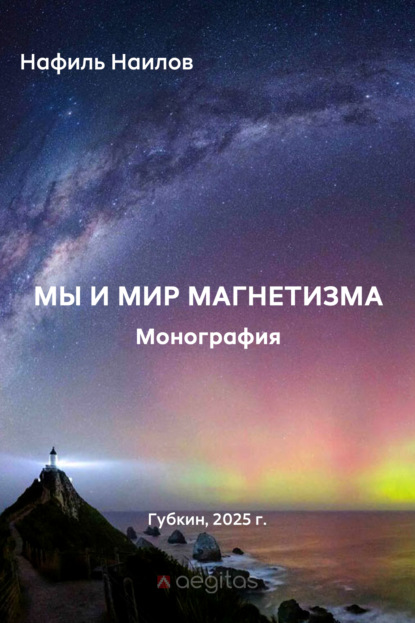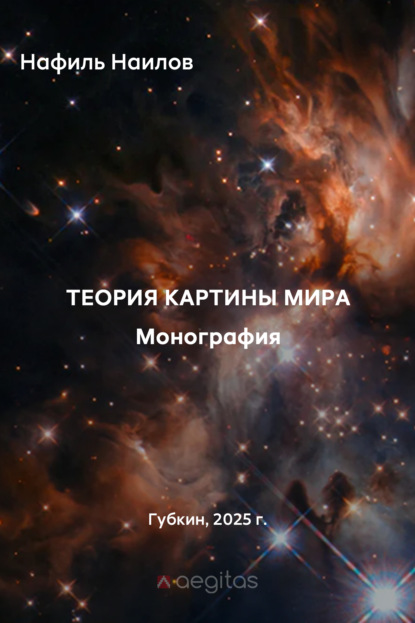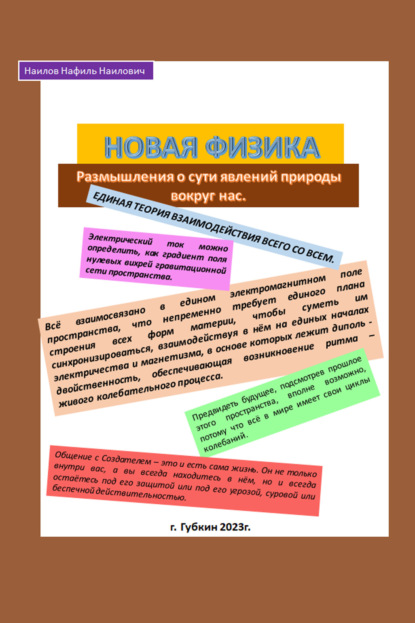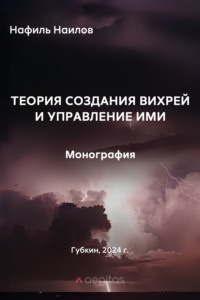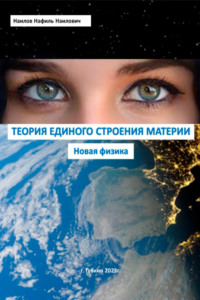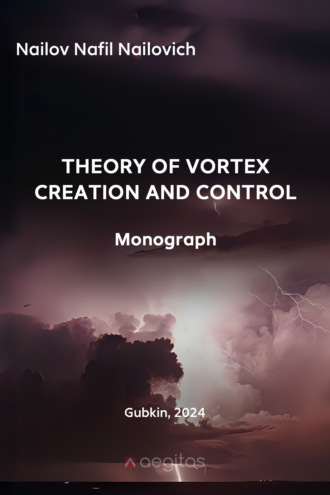
Полная версия
Theory of vortex creation and control
Physics does not at all contradict the possibility of creating "phantoms" of any, including a living object, as an exact copy of the original event that occurred in the distant past of its life. After all, leaving its information in the "past" around us in the surrounding environment, it is completely preserved and reaches us in the matter of the present. And we, of course, can find it, read it, change it, even materialize clones, but not in the past, but in the present. We understand that any kind of energy carries certain information, and energy and information are interdependent, we have already mentioned this. But their effects on the matter of the medium of propagation are different – one is transmitted according to the laws of opposition of the environment, and the second is a reflection, an image of the event. Even events from the past, such as a shot from a gun next to us. We see the flash, hear the sound, and feel the fading energy of the effect of powder gases on the environment, but as events from the past in our already changed present. But in our memory, we record all the information and interact with the environment, analyzing the past and present, and assuming future events. Therefore, information for the environment is "transparent" and spreads in space under certain conditions almost instantaneously.
It is obvious that in everyday life we constantly make decisions and interact with the world around us not only through the analysis of "phantoms" of events that have already happened. For example, you see a tree with green foliage at some distance from you (see Fig. 7). Naturally, you perceive this object in your present time through information that reaches your senses after some time. That is, through the information copies of the tree left by its vibration system when it affected the common environment with you some time ago, in the past, at the amount of its distance from you. Can you feel this tree in a single present tense? Yes. But to do this, you need to approach it and touch its leaves, branches, and trunk bark in order to combine the rhythms of your vibration systems into one joint object (see Fig. 7). Does this mean that each of us has an individual, different present time?
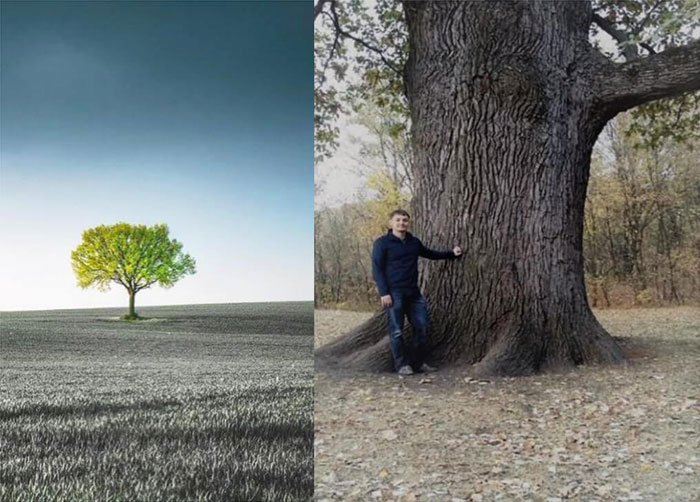
Fig. 7. A tree with foliage far away from us and nearby
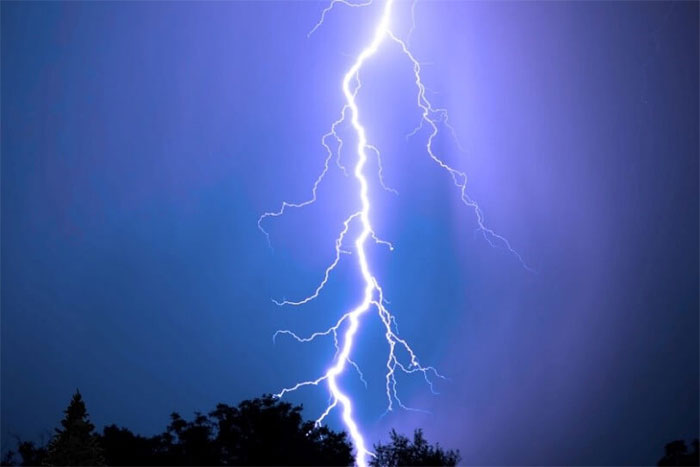
Fig. 8. Lightning flash (photoshop) (photoshop)
Yes, it is possible that the real present time of the "observer" is individual only for himself. Everything that he sees around him in the present time is himself, as his own material object, and everything else is like copies of past events, that is, information or "phantoms" of events in his present environment. But copies of events recorded by this particular "observer" in his present time, because they are around him as reflections from real objects of the environment, fixed by him at a distance.
Can we say with absolute certainty that time exists outside of the "observer"? Imagine that you are in a dark room where there is nothing: no movement in space, no heat, no bodies of any kind. Will you have the opportunity to assess this situation where there is no change? No. Will you have the opportunity to observe the passage of time? No. Has time stopped for you in this situation? Yes. Why? But because you do not have the opportunity to compare the changes in the events around you, they are unchangeable for you. All living things born on this planet are adapted, read synchronized, initially only for the conditions of life on this planet, in this huge unique vibrational system. And what is the difference between the mechanism of movement of objects in the macrocosm described above? For example, lightning or a tree in the process of their growth, or a person? Nothing. Look at a tree – first the trunk grows, then the trunk branches, then the thicker branches, then the very thin ones. Isn't this similar to the discharges at the moment of a flash of lightning (see Fig. 8)?
It is obvious that the growth of matter and its distribution are directed in the direction with a lower than intrinsic density of energy in space, where further processes of strengthening the influence of charges, etc., take place. but also, its reflection on the infinite distances of the Universe. This is the mechanism of creating in space not only a substance, but also a copy of it, not only an object of vibration, but also a source of its information. Our body is no exception, it moves in space as an integral structure of a living form due to the almost instantaneous interaction of all our dipoles, charges, fields with the same forms of matter in the. We are part of the environment because we are made up of the same thing. By moving, we excite the space around us, and every moment of new events and positions in the environment, it acquires exactly the outlines of our body with all its defects, functional capabilities, properties and dynamics. All the energy of our body in the aggregate of all its charges, vortices, dipoles, fields with a full package of acquired informative mutations contained in their internal structures of vibration systems, moves in the medium of space with the speed of light and more. Constantly maintaining the structural density of charges in all its organs, including receiving energy from interactions with sources of vibrational systems of matter from the outside. At the end of each movement, the medium transitions, or tends to, its previous energy state before it is excited by us. And all this with only one goal – to ensure the viability of the body in a changing world. The energy of a given density and form of matter flows through space, using the matter itself in the very medium of space. And all events, or interactions of matter, are essentially continuous multi-channel, modulated information. To put it simply, we in our world are the mobile energy of the densities of charges of matter, where its component, or the shell of each of the structures that form it, and as a result of the body itself, is operational "information". What a great opportunity for the realization of this knowledge opens up for the recovery or artificial correction of the condition of any living being! For example, a person with health disorders can be immersed in the archival field of the matrix of his own informational and energetic still healthy state and correct the acquired defects using the natural processes of regeneration and repair of the body in the immersion environment. No medications or side effects. The same result is possible through close relatives.
Now let's try to summarize all of the above and remember that vibrations or oscillations are radiations that transmit both energy in the form of charges and information in the form of copies, images, imprints of events or phenomena that have occurred as interactions of vibration structures, dipoles, and bodies with each other. There are no voids in space without matter. "Nothing" does not exist. The gaps between various objects are compacted by the vortices of the environment involved in the movement of matter. Vortices that are formed as a result of the rotation and motion of an innumerable number of elementary particles, atoms and other forms of interacting matter constantly appearing and disappearing in space. It is obvious that any matter is a process of energy exchange, both with the external environment and within its form. And the exchange of energy is a movement, a flow of charges, which makes a phenomenon, an event. And any field is the result or consequence of the property of matter to vibrate, radiate, and condense the waves of vibrations of its vortices in the medium of existence, as a gradient of charge density. It can be said that any oscillatory circuit or vibrational system of the microcosm is a part of the structure of matter with its electricity and magnetism, and any substance radiates, and any radiation is a field of the structure of matter. One is impossible without the other. Consequently, energy is an analogue to radiation in the range of the frequency spectrum of any matter. Thus, vortices of different energy, or the number of charges, interacting with each other and repelling each other, create the elasticity of the medium of space, condense it, filling the voids with low density of matter, form conditions for the constant presence of a gradient in space, thereby invariably stimulating the possibility of an innumerable number of displacements and rotations of dipoles, vibration systems, particles, bodies, etc., always striving to create stable and stable structures of matter in the Space. The history of the development of matter for billions of years has proved that any of its forms tends to grow, become more complex and develop, increasingly densifying the space of the Universe. Life is an unlimited synthesis of matter. This means that with the increase in the volume of matter in the environment, the number of energy information systems around us will invariably slowly but steadily continue to increase. Probably, space has been building a single form from the matter of its own environment by trial and error, annihilating and creating again for billions of years.
Everyone knows the statement of modern science that radio waves, like electromagnetic radiation, are not able to propagate in a physical vacuum outside the "ether", in absolute emptiness this is impossible. Is this really so? And in this case, how did "proto matter" move in space initially, at the birth of the Universe? Let's start with a simple one. It is obvious that the higher the density of matter or particles in the medium, the more often and faster the transfer of information through each other occurs, as an imprint of the events that have occurred through the magnetism of dipoles, almost like collisions through the convergence of vortex formations in the environment. In addition, mutual effects in the form of wave energy are also transmitted, but through the condensed matter of the vortex medium involved in rotation between these same rotating (oscillating) dipoles. As a result, we can conclude that in space energy is transmitted not only through waves of longitudinal or transverse vibrations of matter particles in the structure of a disturbed medium, but also as a storm penetrating wave of particles of matter being moved, for example, gas, water, fire, a body in the air – in any form of matter. And these objects, colliding with each other, transfer the moment of motion (inertia) into the medium and fly through the vortices of the densified matter of the medium, moving them apart "like a reed by a body of water", which, under the influence of the repulsion of the objects of the environment, returns behind them to their original position – before the beginning of the disturbance of space. That is, the structures of denser matter move in a less dense medium. And less dense matter, or equal to the medium, unable to overcome the density of the environment between its vortices, cannot transfer the structures of matter, and hence energy, through this medium. In this case, only information is transmitted, as a reflection of the event from one vortex of matter of the densified medium to another. This phenomenon is very similar to the phenomenon of murmuration of starlings or a school of fish in living nature, but the structures of matter, its forms, through a dense medium of particles in space (see Fig. 9). At the same time, we see that the higher the velocity of the body or the density of the medium, the higher the number of interactions and the temperature, and the body is slowed down and deformed. That is, in the entire "volume" of space, countless dynamic processes of interaction of completely different forms of matter are constantly taking place simultaneously. Do not these simple speculations suggest that everything around us consists of many completely different environments in different states of matter, but in no way interferes with each other's existence in a single space? For example, as fields of different ranges of radio waves in a single "ether".
What if the medium where sound propagates and the medium where light propagates are different and practically do not interact with each other in the universe? For example, the sound medium is less dense, with a lower temperature, structured from larger particles of matter with small frequencies of vibrations, etc. And, for example, the medium of light speeds is denser, more elastic, warmer and consists of the smallest energy clumps of matter with high-frequency vibrations. And each of these media comes into contact only with objects of a certain threshold of vibration frequency. Maybe that's why we, adapted for movement in the medium of the sound range, face the problems of movement already at supersonic speeds, and other forms of matter exist freely in the medium of light speeds, but in the same space as us? And we, as bodies, are in contact with this matter, but not in their environment, where the charges of our structural vibration systems interact with each other. To understand the possibility of moving at the speed of light, it is necessary to study the conditions for the existence of matter in finer media. Probably, there is also a superluminal environment and others. It becomes obvious that, overcoming the supersonic threshold of speed, for example, an aircraft makes a leap into another, "denser" atmosphere, and undergoes many shock waves of the opposition of the invasion medium with the occurrence of various phenomena.
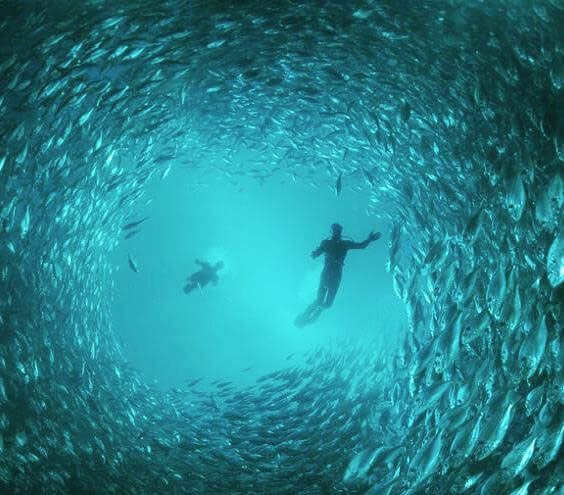
Fig. 9. Murmuration of fish in the ocean (photoshop)
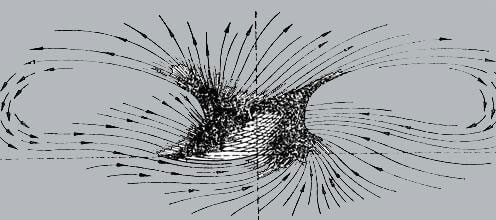
Fig. 10. Diagram of the vortex (photoshop)
Is it possible to conclude from the above considerations that any differently variable movements such as vibrations, or oscillations in the form of contraction-expansion, right-left, down-up, etc., in one phase counteract the medium, that is, radiate, and in the other phase receive absolutely the same "species" modulated radiation? But with imprints, images of events, information from the environment of the surrounding space, which is especially important at high frequencies? Such dipole signals are the source of the origin and impact on the objects of the environment of various electromagnetic fields in the form of vortices, spheres, torus, etc., with their own lines of electric and magnetic field intensities. The process resembles the breathing of an object: inhalation is the absorption of radiation from the outside in the half-cycle of oscillation or rarefaction of the medium, and exhalation in the second half-cycle is the radiation of oscillation or condensation of the medium of presence. It is quite possible that in reality the wave reflected from the obstacle has many surprises for us. Why, for example, is it not possible to assume that everything above the conventional "X-axis" emits waves, and below it receives? So much for the "information-wave" dualism. Clearly worked out for various forms of matter, individually weighted portions of the amount of energy and information given and received, the weight of the object is always stable, for example, like a proton, an electron, etc. And in case of loss or acquisition of a certain value, for various reasons, there is a transition to simpler or more complex structures of forms of matter with a corresponding loss or capture of equivalent energy. Isn't this similar to the mechanism of exchange, "communication" between the object and the matter of the space of the environment? In fact, by radiating, an object transmits all the information contained in the modulated signal about itself, its structure, and receives it back with additional modulation or "reflection" from the outside, that is, with information about other objects in the environment of space. Who said that waves are not capable of multi-channel information-energy interactions, where one radiation creates an infinite number of absolutely different and autonomous fields not only in their shape, but also in the density of charges? Isn't this one of nature's tools in creating the remarkable variety of colors of life in the universe?
Let us imagine a source of radiation or vibration in a complete "void", any matter in the form of a vortex (see Fig. 10). Let it be an elementary particle. Vortex, almost spherical, waves of radiation move away from the form of vibrations of the source into the surrounding environment. What is the mechanism of movement of these waves under these conditions? When there are no vibrations in space before the first wave of vibration of the vortex of our elementary particle. And so, the first half-period of the wave occurs as radiation, the push of a condensed portion of its own matter into the emptiness of the environment, from a particle with its own structure, charges, etc. The gradient will be enormous, as well as the supposed speed of propagation of these clumps of matter into the "void". Probably, the process itself is fleeting, but it unequivocally fills our virtual "nothing" with quite material densities of charges, broadcasting a field of very weak vibrations of the densification of matter. Finally, the radiation stops and the second half-cycle of the wave occurs – rarefaction inside the source, which is then replaced again by radiation or pressure of the charge density of the next ejection period, and so on. Cycle after cycle, the rotating internal charge energy of the matter particle itself creates a density gradient and pushes away the previous wave of the sphere with the next wave from within. It is very similar to how we inflate a balloon, when with each portion of exhalation, it becomes larger and larger, filling the space more and more. Thus, the condensation of the medium distributed around the particle turns into independent forms of matter and fills space with them for billions of years. Yes, the charge gradient in the "void" dries up quickly, especially since there are not enough sources of energy outside in our case.
But let's remember that particles such as the electron and proton are very stable. Does this mean that their own energy in the form of charges in the free state is produced by their internal structural interactions discretely and always? Quite possibly. Moreover, the idea of the origin and distribution of matter not at one point, as a result of the "Big Bang", but everywhere in the Universe and at the same time, as a seeding of "proto matter", for example, as a result of a breath of gas or the processes of compression and expansion, is absolutely real. In this case, in the presence of a multitude of electromagnetic waves and various other densifications of matter in space, with their spiral, cone, toroidal, and other vortex interactions, the velocities of wave propagation in the medium increase manifold. In such a saturated elastic medium, various newly formed bodies, objects, and elementary particles inevitably begin to interact with the energy of the same dipoles in the medium itself, intensifying their own motions or complicating their own structure, using the properties of electricity and magnetism. This is how thousands and thousands of new atoms, molecules, bodies, etc. appear.
Here we are approaching the main topic of our chapter. In the microcosm, where the size of particles, as well as their frequencies of oscillations, are calculated at thirteen and twenty zeros after the decimal point, the orbits of their motions are completely free and mobile in space both within the nucleus itself and within the atom. We know that the structure of various substances and their properties are determined not only by the number of protons, neutrons, and electrons in their nuclei and atoms, but also by the interaction of their charges with each other and with charges from the outside. There are a lot of theories about the structure of the nucleus, but we will consider intranuclear mechanisms not so much as interactions of the phenomena of electricity, magnetism and density gradients, but as the phenomena that gave rise to them – vortices and dipoles. After all, each particle in the form of a vortex dipole, moving along its orbit inside the nucleus at the speed of light, densifies the matter of the surrounding environment. The inclination of the axis of rotation of such a dipole strongly depends on the influence of charges from the outside, which means that the chaotic orbital motion of such discrete particles itself creates a spherical shell of the compaction gradient in the superposition trajectories from numerous vortex perturbations of the medium. The number of such shells depends on the number of vortex dipoles in the nucleus, that is, on the number of protons and neutrons. It should be noted that a neutron, having no charge, is still a neutral vortex dipole, for example, a magnetic one. For example, if a particle is charged like an electron, then it is natural that a rotating charged particle must have a magnetic moment. This is also true for a composite particle, even if it is generally neutral, but consists of separate charged parts, like a neutron. You can think of elementary particles, for example, as miniature magnets. They can turn over under the influence of an external magnetic field, attract or repel – everything like real magnets. In general, magnetism is considered here as a total – orbital and spin. Now imagine that all neutrons are united in one central, densest sphere of the nucleus, and protons are combined in the next sphere describing it. Then, behind the nucleus are the third and subsequent spheres, which unite all the electrons of the atom. At the same time, each sphere consists of its energy shells of different gradient of the density of matter of the medium, the number of which is determined by the number of neutrons, protons and electrons in the atom (see Fig. 11). They can be called the neutrosphere, proton sphere, and electron sphere, and all spheres have their own total charge, respectively (in the figure) neutral pink, positive yellow, and negative blue. Isn't it true that this single structural form of the atom, with the interacting spherical spaces of a multilayer spherical capacitor, is very similar to an ideal oscillatory circuit, where oscillations of electric quantities occur, which are accompanied by the mutual transformation of the energies of the electric and magnetic fields? When the energy of the electric field of the capacitor is similar to the kinetic energy, and the energy of the magnetic field of the orbital shells of the compacted medium is the potential energy, for example, of a mechanical pendulum? In particular, with all the ensuing properties and interactions of spheres as dipoles, with their poles, lines of force, vortex torus, etc. Each particle of the nucleus forms its own shell, unlike electrons, which can build shells with an even number of particles. Fig. Figure 11 shows three shells in each sphere, with three protons, a neutron, and an electron, respectively. It is obvious that the shell-spherical structure of the nucleus is similar for the entire atom. Note that within each shell the particle moves in any plane, and in any direction, depending on the influence from the outside, including its neighbors, for example, as in Fig. 12.
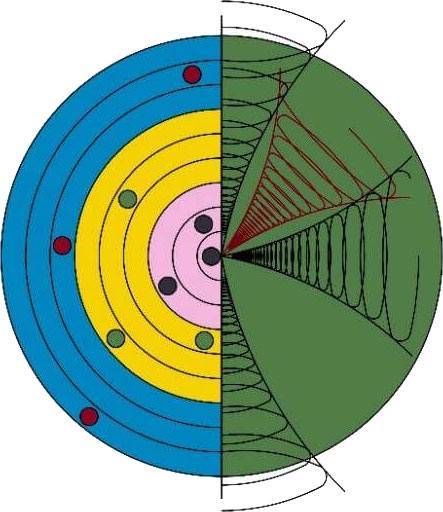
Fig. 11. Diagram of the structure of the atom

Fig. 12. Orbitals and directions of motion of particles along them in adjacent shells of the spheres of the atom's structure
Nuclear bonds between nucleons in spheres have an intense character of charge exchange in a very dense natural medium of space. Such an exchange speaks of the constant absorption and emission of energy radiation, as an exchange of energy between neutrons and protons. According to statistics, only a quarter of all atomic nuclei are stable. That is, the interaction of the energies of the densified media of spherical shells generated by circular chaotic orbitals of nucleon vortices under external influence affect the spasmodic change in the properties of the nucleus as a particle. It is clear that in such a dependence, each additional neutron forms a new shell in its sphere, and a proton in its own sphere. This kind of formation of new energy shells by neutrons and protons in the spheres of the nucleus of the same name is fully consistent with the filling of electrons in their spherical orbitals in less dense environments of electron sphere shells, including those with completed outer shells of stable atoms. The properties of the elements, as well as the properties of the forms formed by them, are in periodic dependence on the charges of their nuclei, which is prescribed in the table of elements by D.I. Mendeleev.




